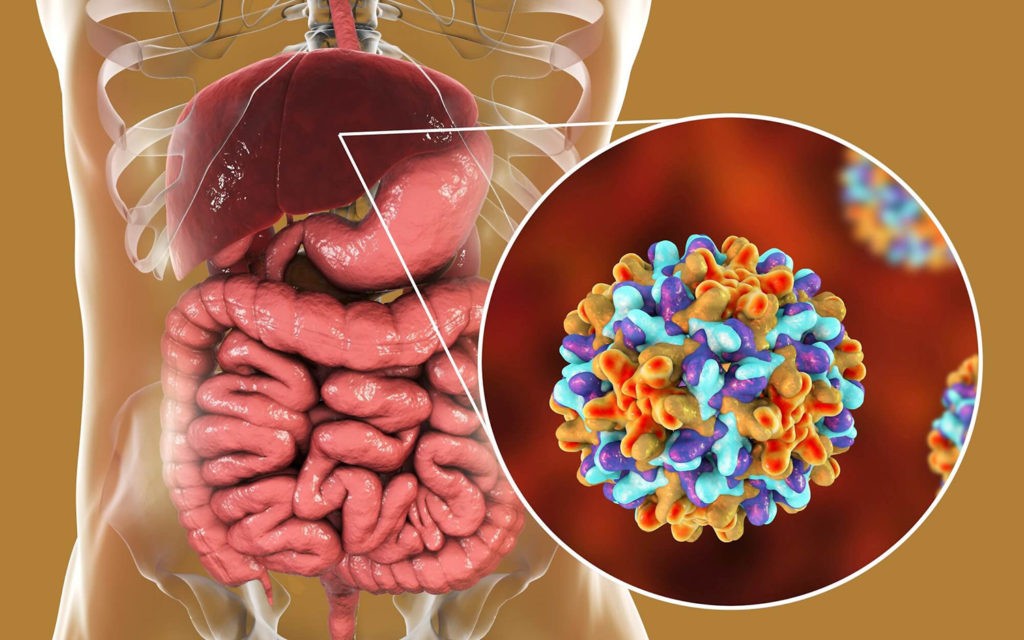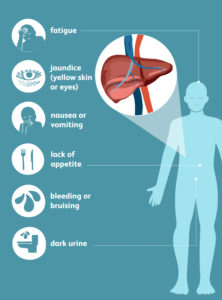Hepatitis Can’t Wait

With World Hepatitis Day recognized on July 28th, we cannot wait any longer to bring full awareness to this inflammatory condition of the liver.
Story by Ann Butenas

With one person dying every 30 seconds from an illness related to viral hepatitis, it is imperative we raise increased awareness of this life-altering disease. World Hepatitis Day is a great place to start the conversation.
World Hepatitis Day occurs every year on July 28th to not only bring more understanding of the worldwide burden of viral hepatitis but also to affect change. The theme for 2022 is “Hepatitis Can’t Wait.” People who live with this disease can’t wait for more testing or for life-saving treatments. Babies can’t wait for birth dose vaccination. People with hepatitis can’t wait to end the stigma associated with this disease. Communities can’t wait for bigger investments. Finally, decision-makers can’t wait and need to act now to eliminate hepatitis through both political action and increased funding.
What is hepatitis?
 When you break down the word hepatitis, “hepar” (a Greek word) means liver, and “itis” means inflammation. In a nutshell, hepatitis is an inflammation of the liver. Your liver is a vital organ that filters your blood, fights infections, and processes nutrients. When your liver is damaged or inflamed, it cannot function at its optimum capacity. While there are other causes of this diseases, it usually results from a viral infection.
When you break down the word hepatitis, “hepar” (a Greek word) means liver, and “itis” means inflammation. In a nutshell, hepatitis is an inflammation of the liver. Your liver is a vital organ that filters your blood, fights infections, and processes nutrients. When your liver is damaged or inflamed, it cannot function at its optimum capacity. While there are other causes of this diseases, it usually results from a viral infection.
We spoke with Dr. F. Blaine Hollinger, Professor of Medicine in Molecular Virology and Epidemiology and Director of the Eugene B. Casey Hepatitis Research Center at Baylor College of Medicine in Houston, Texas, to provide us with further insight into this disease.
“Any disease that causes inflammation of the liver will be called hepatitis, such as autoimmune hepatitis, alcoholic hepatitis, viral hepatitis, granulomatous hepatitis, drug-induced hepatitis, etc.,” he explained. “For viral hepatitis, there are five specific causes, A to E, and they are all uniquely different viruses. There are 296 million people worldwide living with hepatitis B with around 800,000 deaths each year.”
Dr. Hollinger further noted that hepatitis C is less common, with around 60 million people with that disease.
“Hepatitis E is either the first or second greatest cause of acute viral hepatitis in the world,” he indicated. “From 12-15 million people have been infected with hepatitis D. Each of these viral disease infections can result in acute or chronic outcomes. Hepatitis A involves about 1.5 million people each year and only causes acute disease, which is the most common outcome in hepatitis E.”
Who is at risk for hepatitis and how is it spread?
According to Dr. Hollinger, hepatitis B can be contracted through injection drug use, sexual transmission, vertical or early childhood infections, and, in some countries, transfusion-transmitted disease.
“For chronic hepatitis C, we now have a treatment that results in a cure, so contaminated needles and blood transmission have become less of a concern,” he noted. “Risk for contracting hepatitis A is (through) fecal-oral contamination, as it often is for hepatitis E, although the latter also is a zoonotic or a disease which can be transmitted to humans from animals that is primarily acquired by immunosuppressed individuals who often develop chronic disease (e.g., liver transplant patients).”
What are the main symptoms of hepatitis?
 According to healthline.com, the primary symptoms of infectious hepatitis can include fatigue, dark urine, pale stool, flu-like symptoms, loss of appetite, weight loss, abdominal pain, and yellow skin and eyes.
According to healthline.com, the primary symptoms of infectious hepatitis can include fatigue, dark urine, pale stool, flu-like symptoms, loss of appetite, weight loss, abdominal pain, and yellow skin and eyes.
How to prevent hepatitis.
Dr. Hollinger noted there are vaccines for hepatitis A, B, and D (vaccine for hepatitis B will also protect against hepatitis D since that virus cannot replicate in the absence of hepatitis B virus) and hepatitis E (but not available in the USA).
In the news: kids with hepatitis.
 Between April 5 and May 26 of this year, “650 probable causes of acute hepatitis of unknown aetiology in children were reported by 33 countries to the World Health Organization (WHO) within five WHO regions. Out of those 650 cases, 38 children have required liver transplants and nine deaths have been reported to WHO.”
Between April 5 and May 26 of this year, “650 probable causes of acute hepatitis of unknown aetiology in children were reported by 33 countries to the World Health Organization (WHO) within five WHO regions. Out of those 650 cases, 38 children have required liver transplants and nine deaths have been reported to WHO.”
While researching the current status of hepatitis in children, researchers theorize the cause is adenovirus, which usually circulates spring through fall. While none of the typical viral suspects – hepatitis A, B, C, and E – have been noted as a cause for the outbreak in children, researchers have discovered that one type of adenovirus – type 41 – has been found in roughly half of the cases around the globe.
However, severe hepatitis is rare in children who are healthy, and should a child contract this disease, the odds tend to remain in the child’s favor. Having access to information can be your most powerful tool in the fight against this disease.
How do these adenoviruses spread?
These viruses can travel through respiratory droplets, close personal contact, or through objects people touch, which can include anything from doorknobs to furniture to utensils. While respiratory illnesses are typically caused by the adenoviruses, some do stir trouble in the gut.
Granted, when a child becomes ill, a parent will most likely go into high alert. However, most doctors only test for adenovirus if a child presents as severely ill and needs to be admitted to the hospital. Nevertheless, should a diagnosis of adenovirus be made, recovery is common with proper time and attention given to medically tending to the child.
For further information.
 If you want to learn more or are interested in becoming involved in World Hepatitis Day, go online at worldhepatitisday.org. You can join the campaign and get involved. Even though we are still dealing with the ongoing Covid-19 pandemic, hepatitis is still a global issue. World Hepatitis Day is designed to arm policymakers, medical professionals, and the general public at large with life-saving information about viral hepatitis.
If you want to learn more or are interested in becoming involved in World Hepatitis Day, go online at worldhepatitisday.org. You can join the campaign and get involved. Even though we are still dealing with the ongoing Covid-19 pandemic, hepatitis is still a global issue. World Hepatitis Day is designed to arm policymakers, medical professionals, and the general public at large with life-saving information about viral hepatitis.
You can easily get involved with World Hepatitis Day by simply sharing #WorldHepatitisDay on your social media accounts or you can go to the World Hepatitis Day website as previously mentioned and create a poster to display at your local community center or in your workplace. You can also write a letter to your local policy maker urging them to commit to eliminating viral hepatitis by 2030. Every action you take, no matter how small, can truly make a significant difference in the fight against this disease.
This information is purely informational and should not replace any information, advice, or direction from your health care provider. If you have any questions or concerns regarding hepatitis, please speak with your physician directly.






